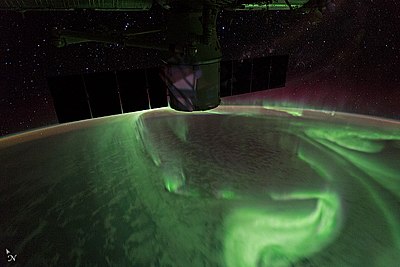
What is an Aurora?
An aurora also referred to as polar lights (aurora Polaris), northern lights (aurora borealis), or southern lights (aurora australis), is a natural light display in the Earth's sky, predominantly seen in high-latitude regions.
What makes this happen?
Auroras are the result of disturbances in the magnetosphere caused by the solar wind. These disturbances are sometimes strong enough to alter the trajectories of charged particles in both solar wind and magnetospheric plasma.
These particles mainly electrons and protons, precipitate into the upper atmosphere (thermosphere/exosphere). When the atoms in the atmosphere are contacted by these particles then they are excited and release energy in the form of photons which emit light of varying color and complexity.
Excited Oxygen atoms are responsible for the green and red color whereas excited Nitrogen atoms produce blue.
Where does this happen?
The places where these things occur are called the Aurora Ovals.
Most of the planets in our solar system, some natural satellites, brown dwarfs, and even comets also host auroras.
The strong green light originates at altitudes of 120 to 180 km, Red Northern Lights at even higher altitudes, while blue and violet occur mostly below 120km.


Comments
Post a Comment